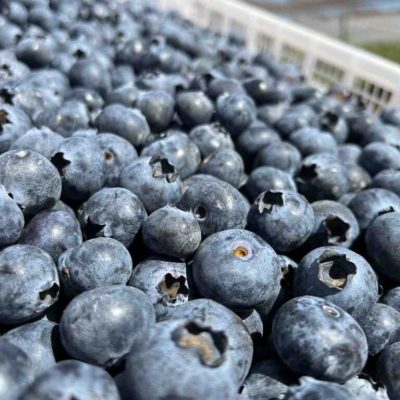Fresh remains key factor at retail
A survey of shoppers in 58 countries across the globe revealed that fresh food continues to play an increasingly important role in the shopping decisions of most consumers.
The Nielsen Shopper Trends Survey was a global study covering 54 markets with a total sample size of 87,000 respondents. The survey was conducted online or with face-to-face follow-up in home interviews.
The Nielsen group provided the caveat that while an online survey methodology allows for tremendous scale and global reach, it also only provides a perspective on the habits of existing Internet users, not total populations, which can skew to a more affluent, educated and younger demographic.
Nonetheless, the survey showed that shoppers across the globe consider fresh foods a very important driver in the shopping decision.
The report on the survey said, “Fresh foods continue to maintain healthy sales contributions at retail. In fact, fresh foods can comprise between 30-60 percent of total food, grocery and personal care expenses on average, depending on country and type of fresh product. Let’s face it, fresh foods are high-traffic volume boosters.”
Asian shoppers were at the top of that range while U.S. shoppers were at the bottom as fresh foods constitute about 30 percent of grocery sales in the United States. The report found that it is fresh foods that set retailers apart from each other.
However, the survey showed that while fresh is flourishing, it is not immune to price pressures.
Shoppers around the world generally listed “good value” as one of their top three reasons for shopping a specific store for their fresh foods. More than half (52 percent) of respondents to the 2012 Nielsen Shopper Trends Survey said that rising food prices affect their purchasing of fresh foods,
Consumers listed a variety of reasons why they shop at a specific retailer, with the top 10 drivers being enjoyable shopper experience; one-stop shopping; well-stocked inventory; good value for the money; pleasant store environment; excellent customer service; wide variety of products; high-quality fresh food; wide range of fruit and vegetables; and high-quality premium brands.
Globally, fresh food is a high-traffic builder as the average shopper heads to a market 2.5 times per week to buy fresh foods. Shopping trips are most frequent for the sub-category fruits and vegetables sector at an average of 3.2 times per week.
Although the top few reasons shoppers head to the market are fairly consistent around the world, the order changes based on region. Good value for the money and convenience are most important store choice factors among Europeans and North Americans, while freshness tops the list in Asia-Pacific, Latin America and Middle East/Africa.
The survey found that convenience is “king” in the United States. Americans shop for fresh foods less frequently than other respondents, but fresh foods are continuing to gain greater traction.
Fresh produce represents about one-third of all fresh food sales in the United States, surpassed only by meat but besting bakery, deli and seafood categories.
Interestingly, U.S. consumers list “good value” as the primary driver in purchasing of all fresh food categories, except produce. For produce, U.S. consumers said “fresh selection” was No. 1, followed by “good value” and “convenience.”
U.S. consumers, however, are in the process of switching their buying locations a bit. According to the Nielsen survey, shoppers are showing a slight trend away from traditional supermarkets and more toward supercenters and club and warehouse stores.
Using the data from the survey, the Nielsen researchers projected that by 2016, the traditional grocery store will have a 64 percent market share of fresh food retail sales. That will represent a 2 percent drop from 2012. During that four-year period, market share of fresh food sales for supercenters will rise 1 percent to a total of 15 percent, while warehouse and club stores will see a 2 percent increase in their market share of the category to 12 percent.
Other purchasing channels, including convenience stores and dollar stores, are forecast to drop 1 percent of market share to a total of 9 percent by 2016.
This trend of decreasing market share for the traditional supermarket has been ongoing for the past decade. However, their market share of fresh foods is significantly greater than their overall market share.
In fact, in 2011 traditional supermarkets accounted for less than 50 percent of total sales in the “grocery and consumables” category, according to a Willard Bishop sales analysis.
However, the Nielsen report states that “fresh is increasingly growing in non-grocery channels as a greater availability and assortment of fresh products across retail channels respond to consumer demands.”
The report continued: “Savvy retailers understand that consumers want the option to choose fresh foods anywhere, and they are fighting for the fresh share of wallet.”
Bruce Axtman, president of the Nielsen Perishables Group, said, “Fresh as a commodity market is changing and can no longer just rely on strategies that are determined by supply and commodity prices. Suppliers and retailers are slowly but surely transitioning to the consumer-packaged goods style of category management based on the knowledge of both consumer and performance data to better understand how various consumer groups purchase fresh foods differently, at which stores, and at what price points.”
He added that fresh foods are becoming more complex with greater variety in products and package sizes, more private label/brand options and increased value-added products, such as diced vegetables or pre-marinated meats.
The Produce News






